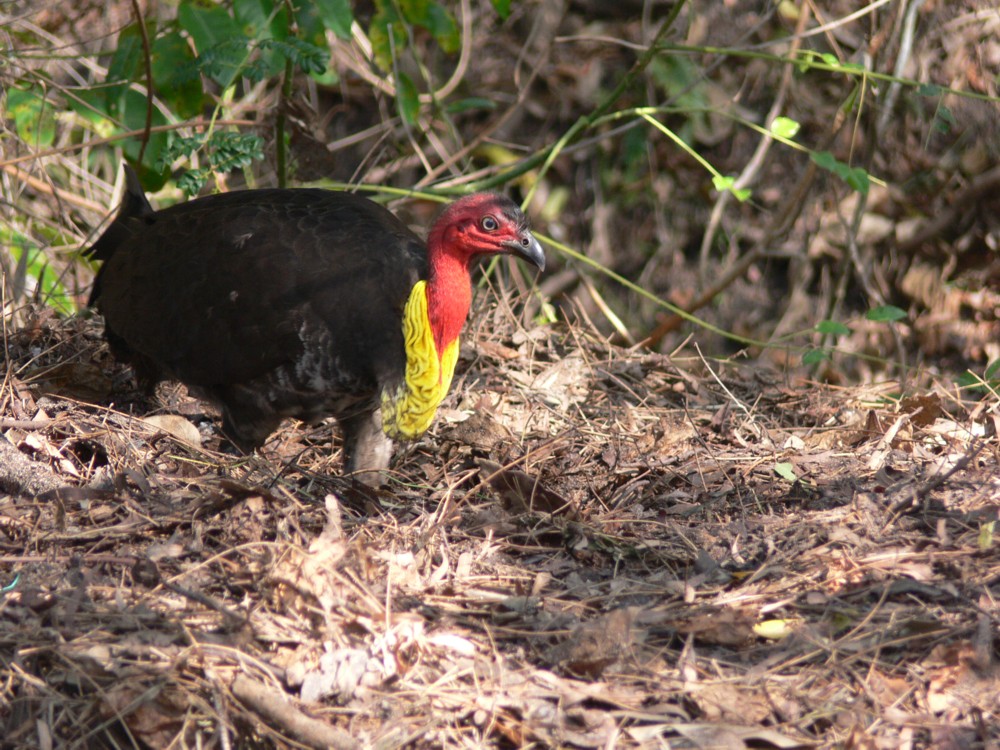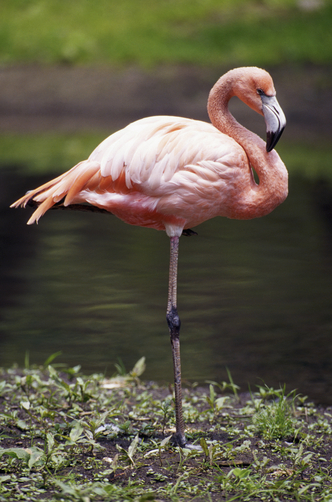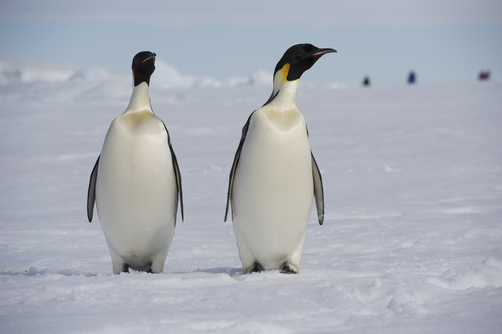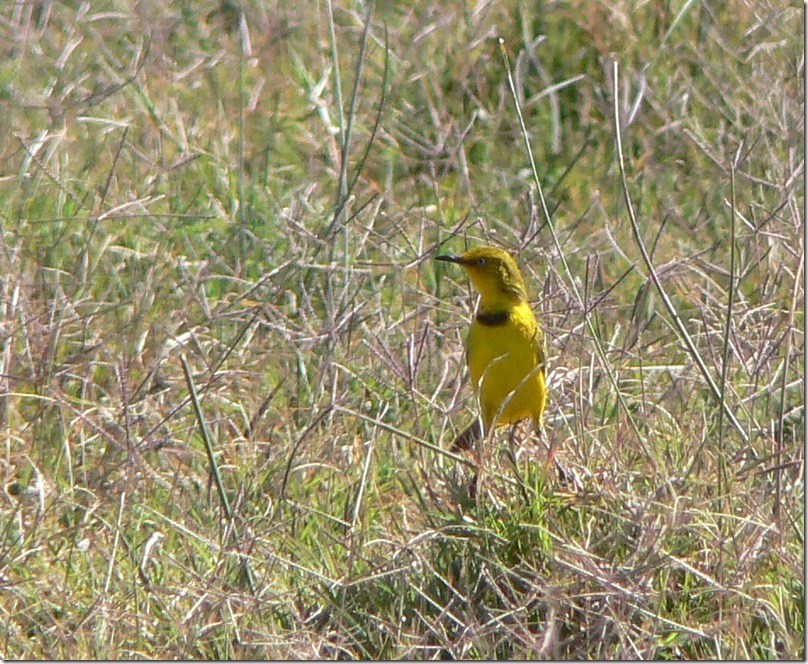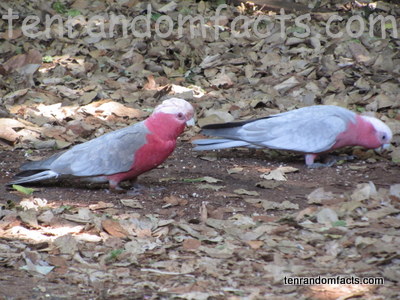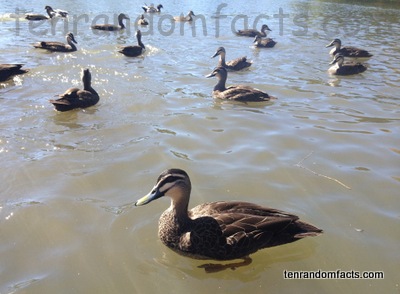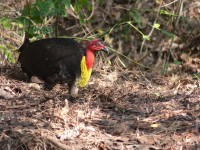
Can you hear the quiet grunt of an Australian brush turkey?
- Australian brush turkeys are common ground dwelling birds, native to the eastern areas of Australia’s Queensland and New South Wales.
- ‘Australian brush turkeys’ are also known as ‘Australian brush-turkeys’, ‘scrub turkeys’, ‘bush turkeys’ and ‘brush turkeys’.
- An Australian brush turkey has the scientific name of Alectura lathami, and comes from the family Megapodiidae, the family of mound building birds.
- Australian brush turkeys have mostly black feathers, yellow wattles and red necks and heads.
- Male Australian brush turkeys use leaf matter and other organic litter to create mounds, up to 1.5 metres (5 feet) in height and 4 metres (13.1 feet) in diameter, that covers the 16 to 24 eggs that a female lays.
Photo courtesy of Val Laird
- Australian brush turkeys grow to be 60 to 75 centimetres (23 to 30 inches) in length, weigh 2.27 kilograms (5 pounds) on average, and have an 85 centimetre (33 inches) wingspan, although they only fly very short distances.
- Australian brush turkeys are found mostly in rainforests, urban areas, and scrublands.
- Male Australian brush turkeys use their mound as an incubator, often for more than one female’s eggs, and keep the mound at a constant temperature in the mid thirties °C (nineties °F), using their beak to test the temperature, and changing the temperature by adding or removing leaf matter.
- Australian brush turkeys have a diet that mainly consists of seeds, insects and fruit.
- Australian brush turkey chicks are not cared for by their parents and are capable of looking after themselves, although they are often preyed upon by animals and birds, and are said to have a 1 in 200 chance of survival to adulthood.
Bibliography:
Australian Brush Turkey, 2013, Wildlife, http://www.wildlife.org.au/wildlife/speciesprofile/birds/brushturkey.html
Australian Brushturkey, 2014, Wikipedia, http://en.wikipedia.org/wiki/Australian_Brushturkey
Brush-turkey: The Rainforest Rake, 2007, Skyrail, http://www.skyrail.com.au/news/skyrail-nature-diary/1040-brush-turkey-the-rainforest-rake





